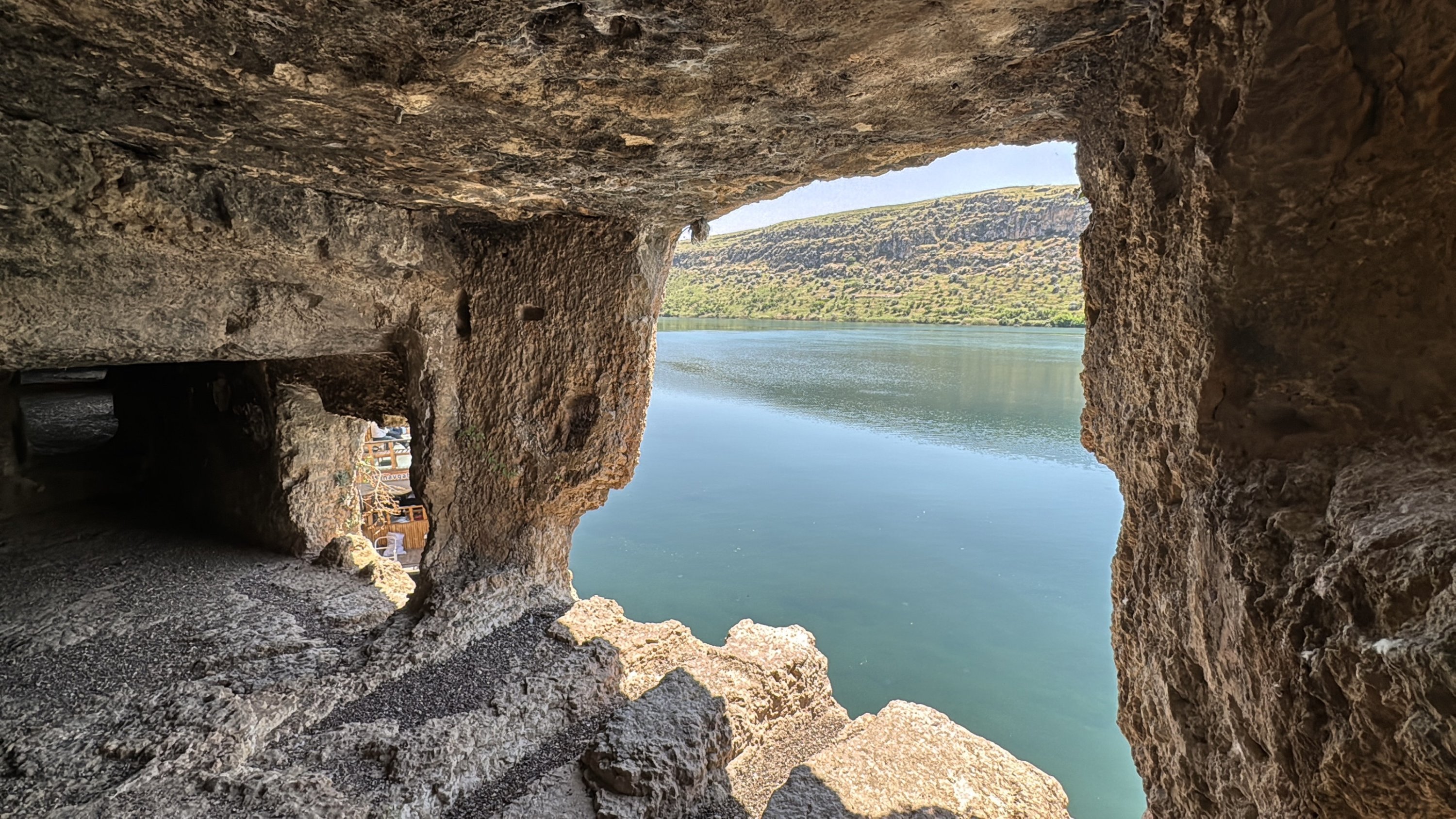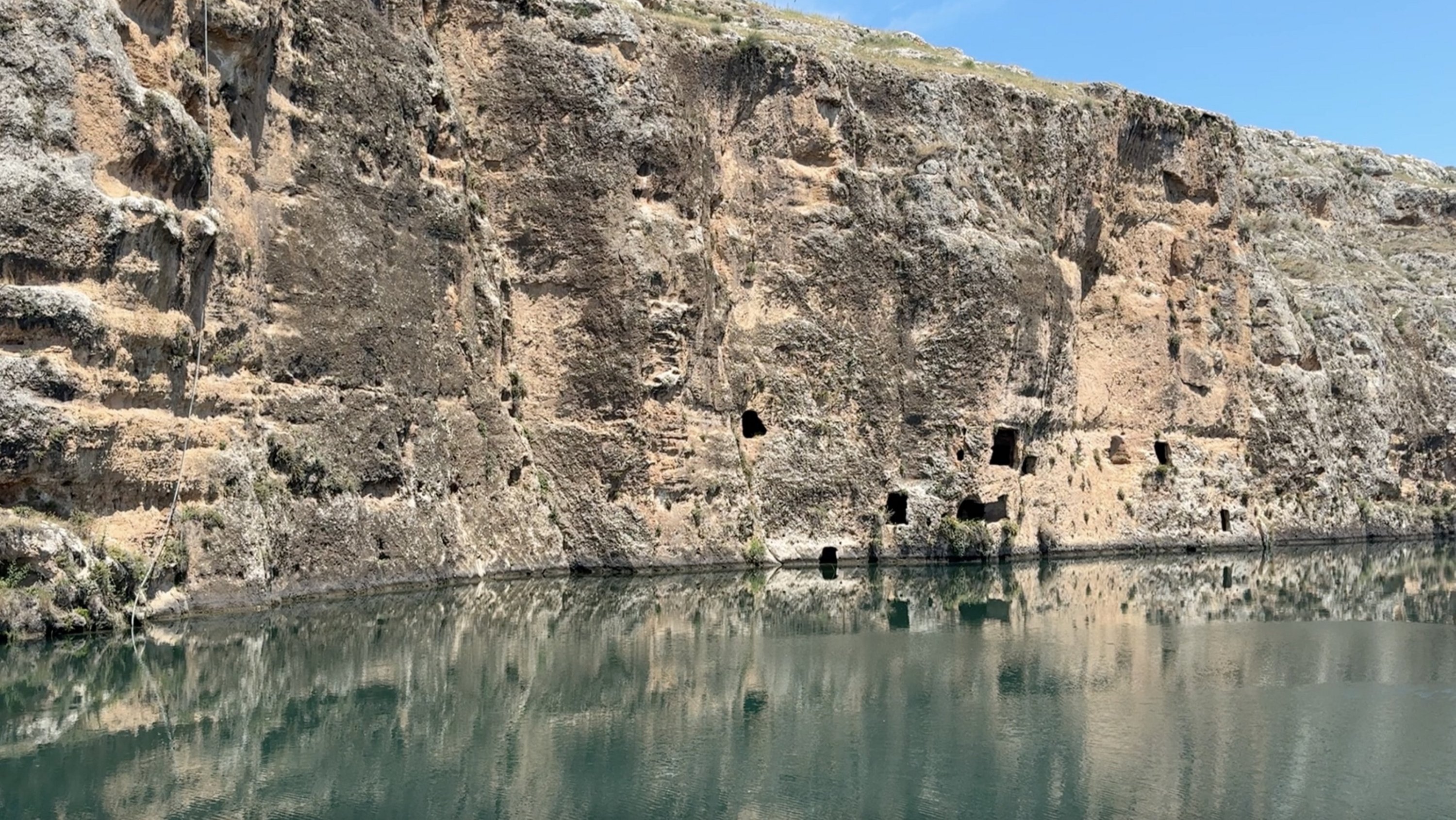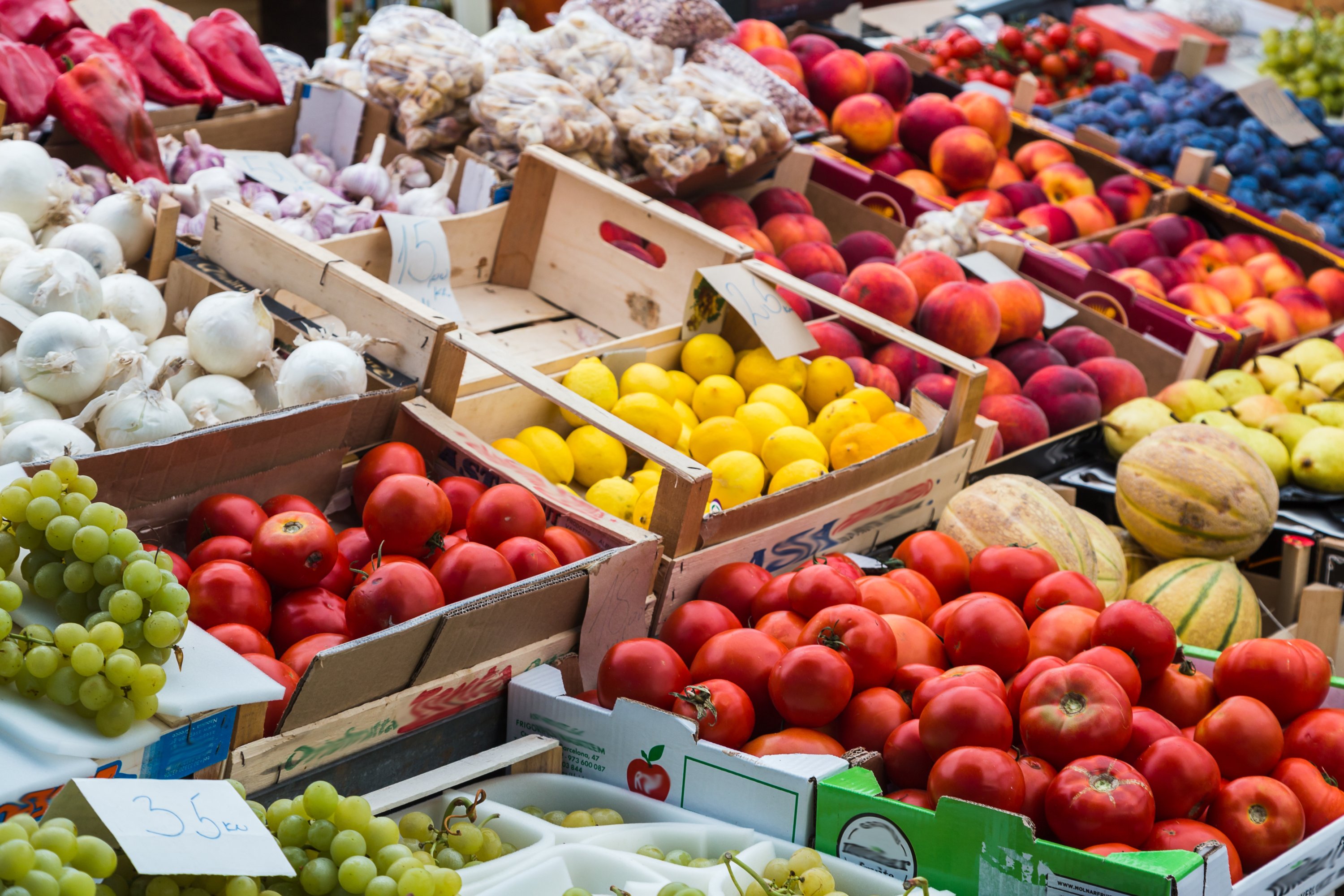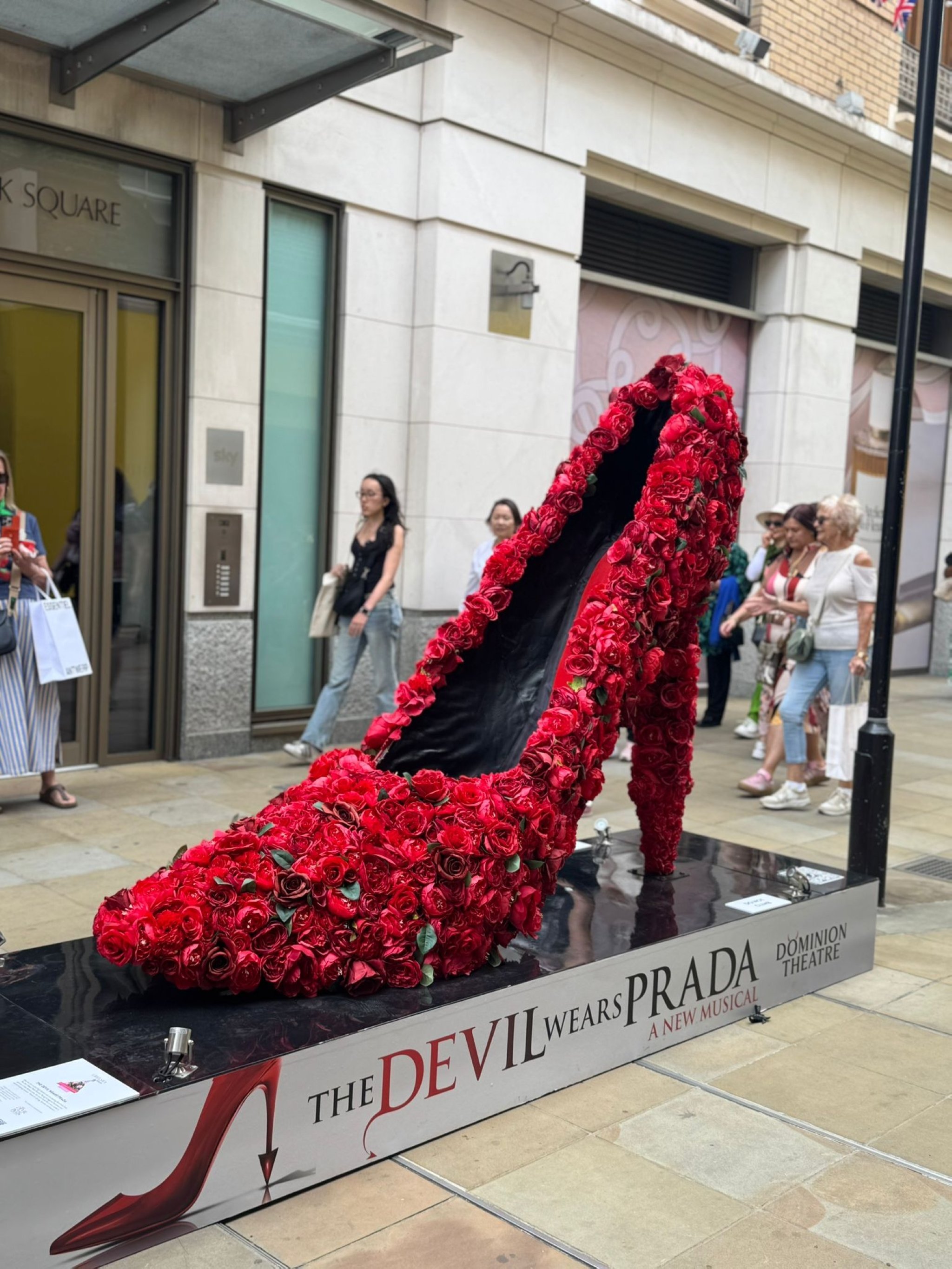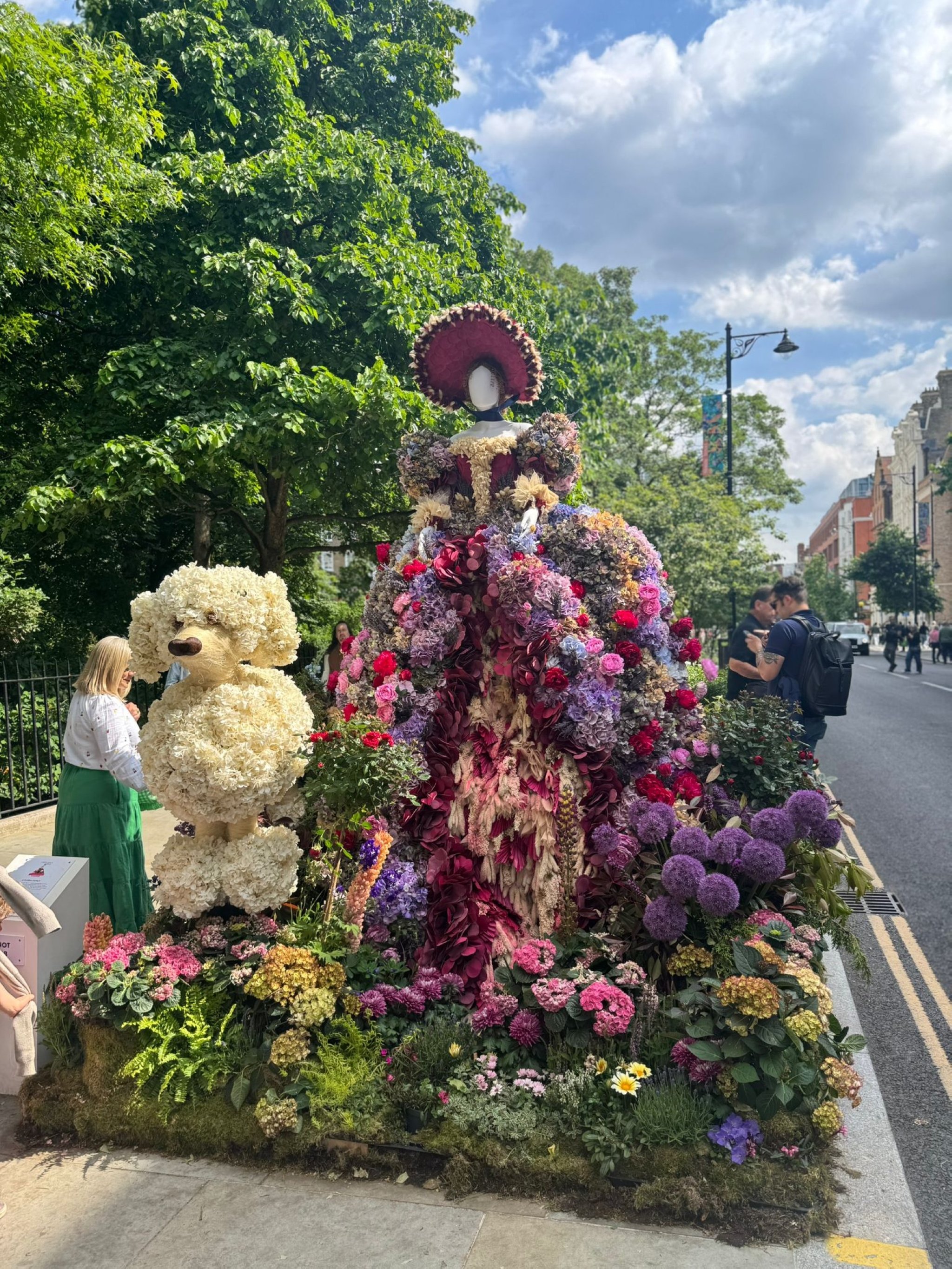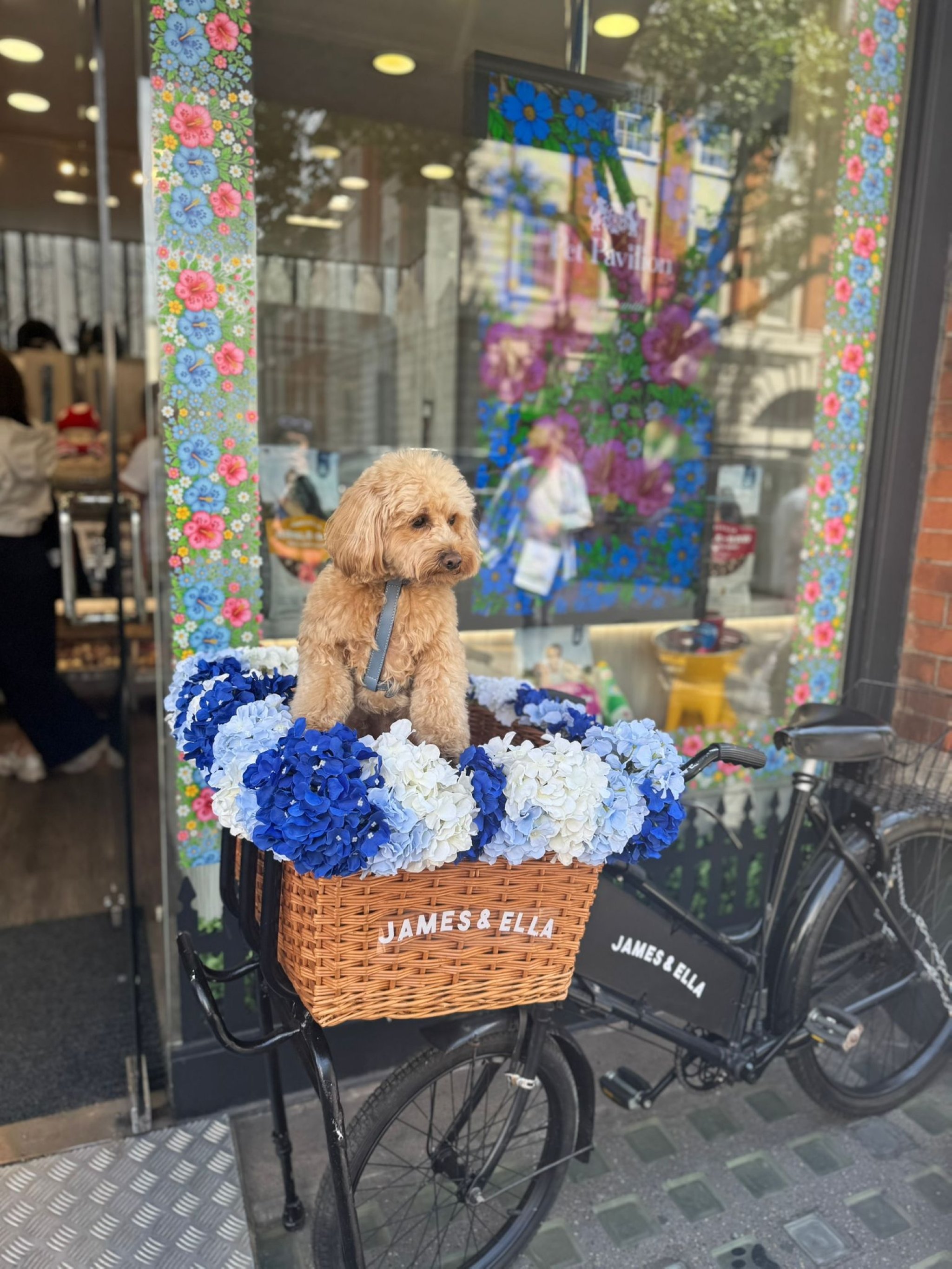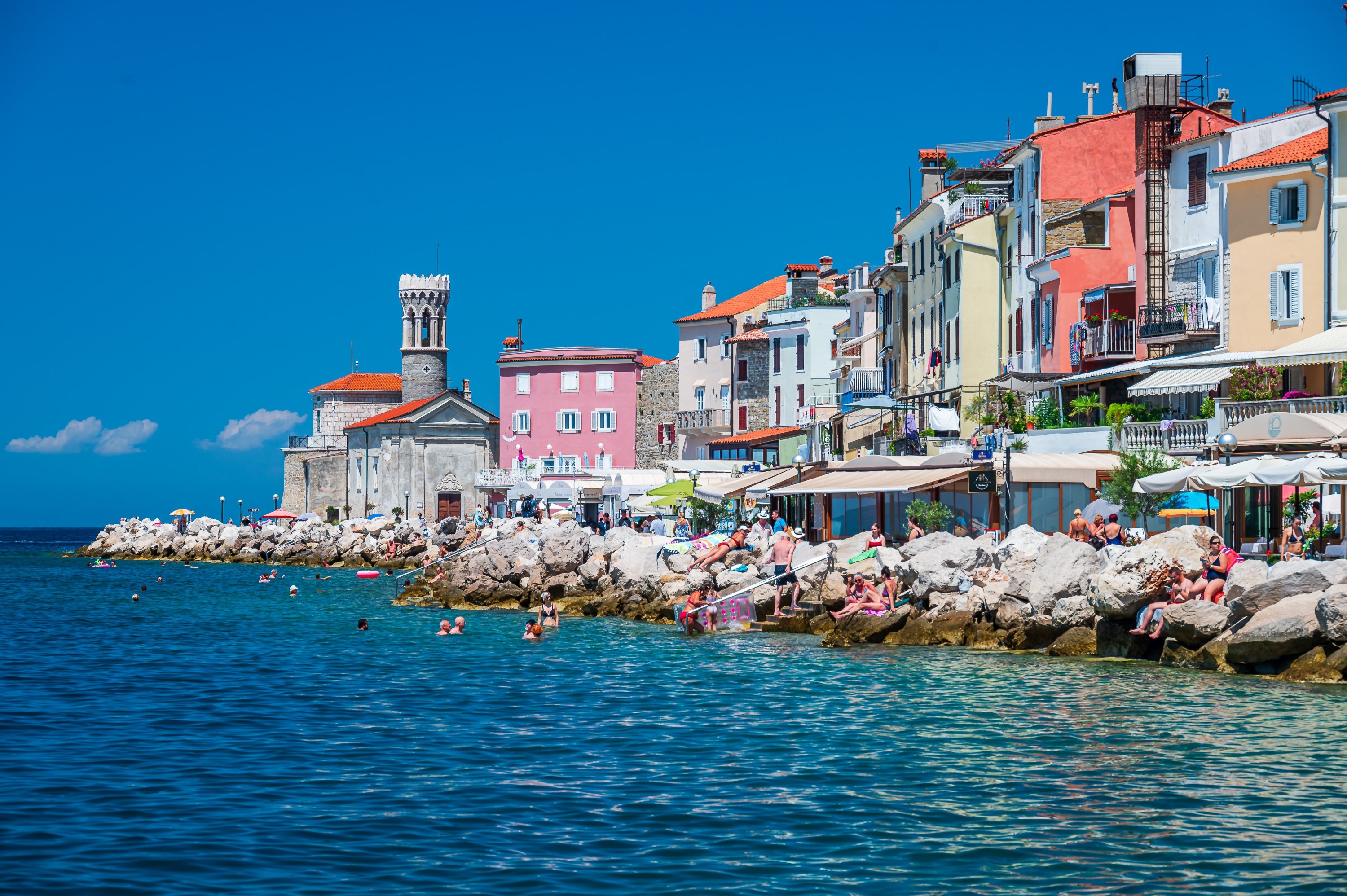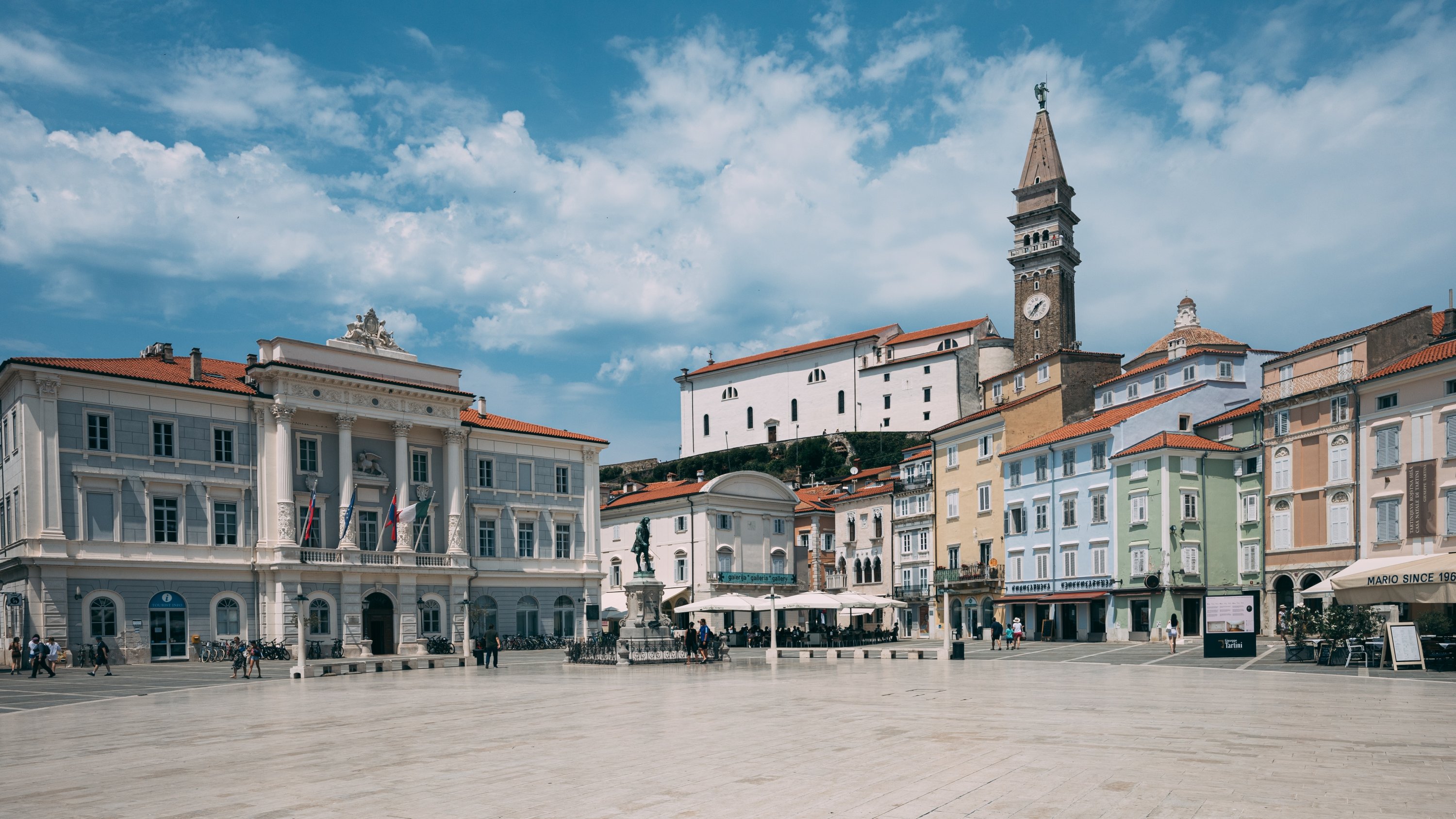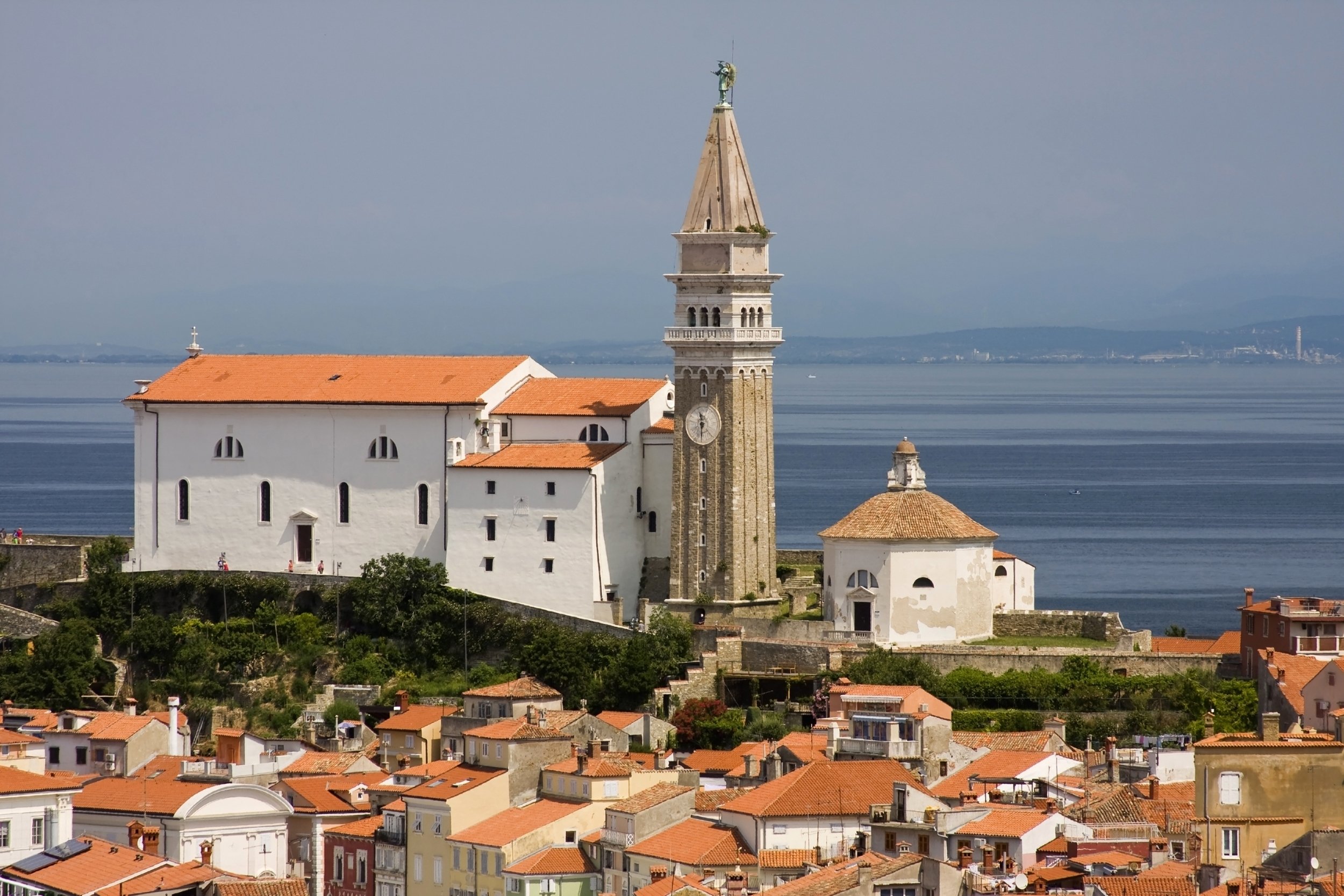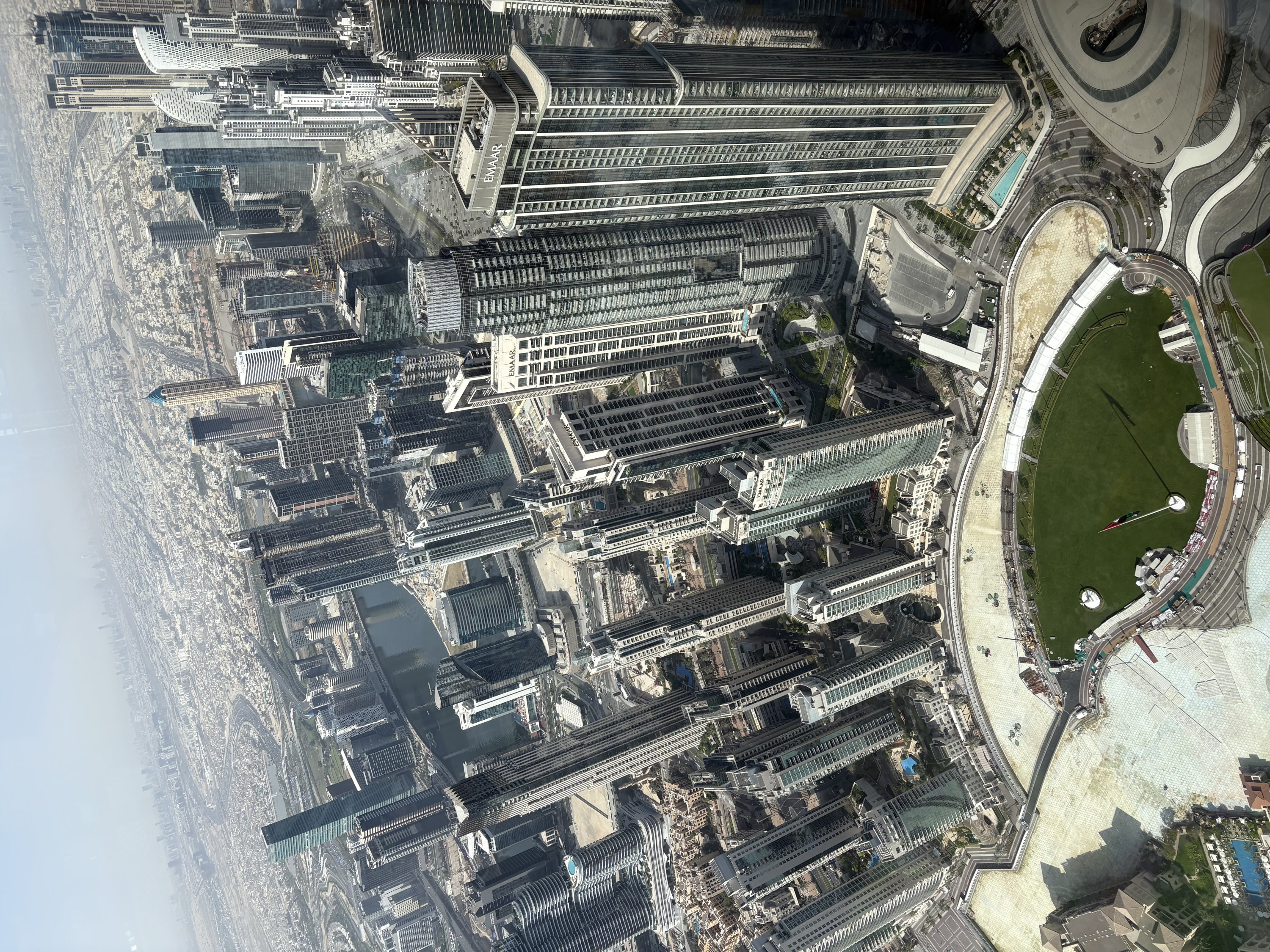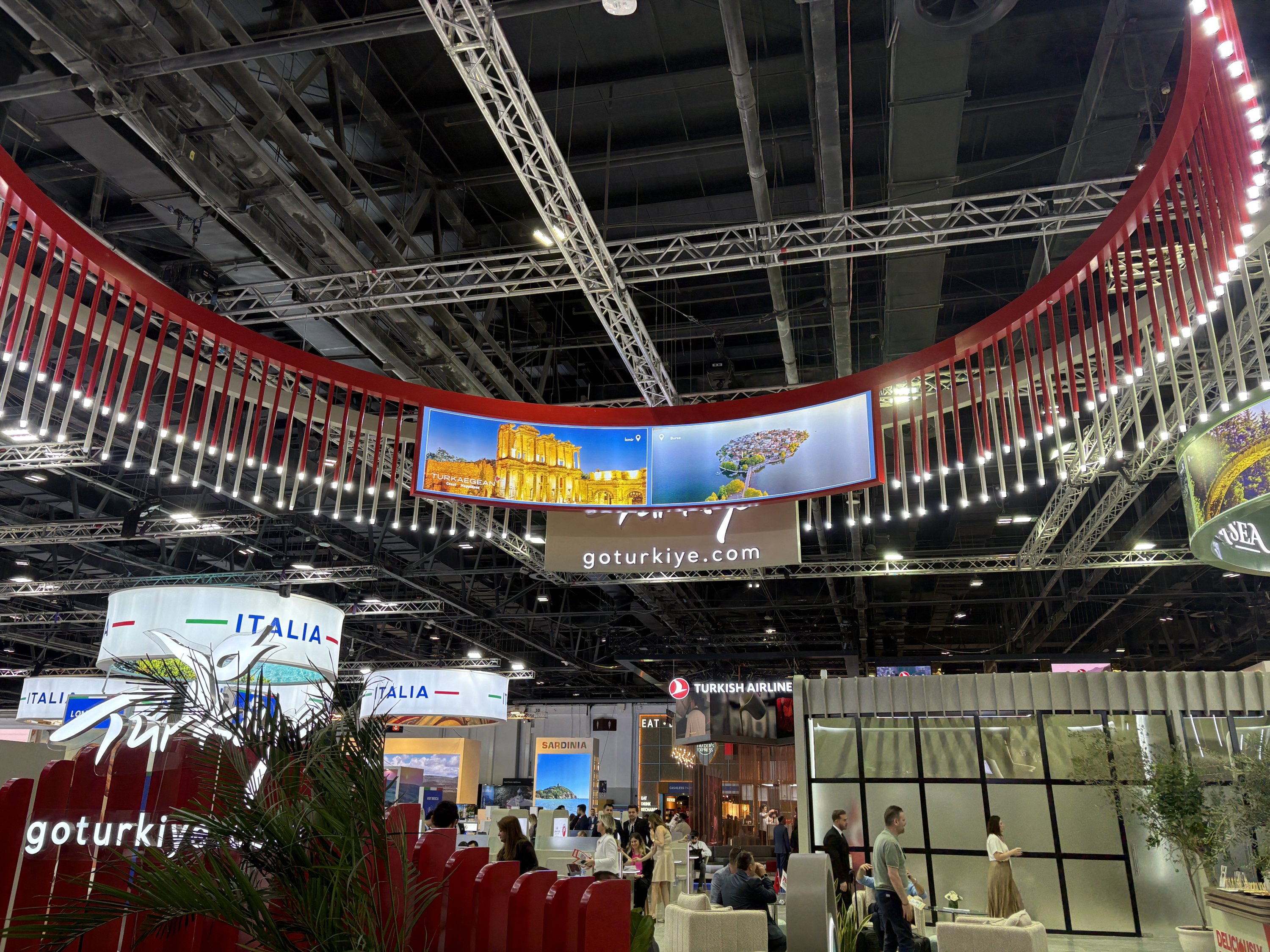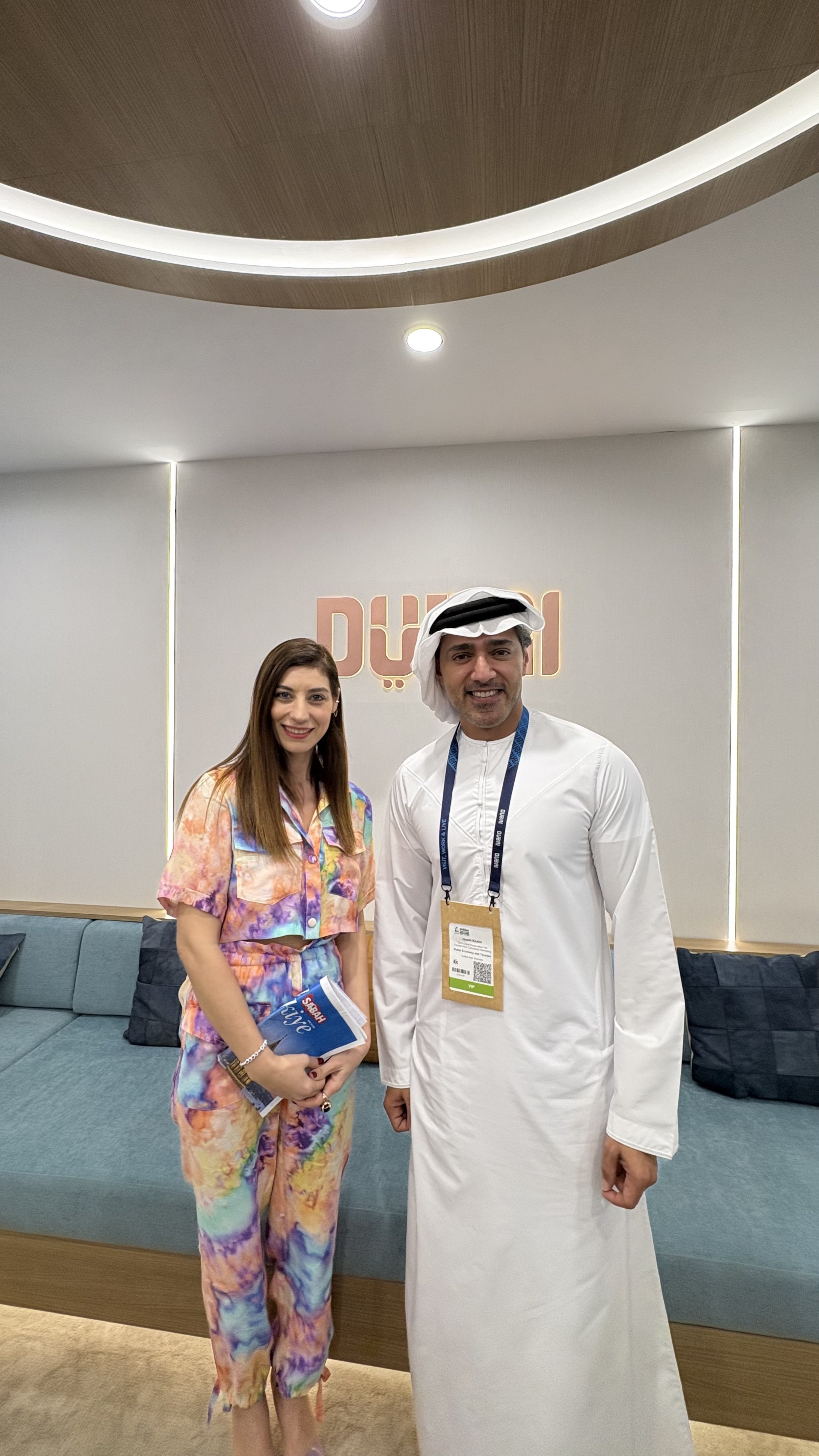Lifestyle
Ramadan in London: Spiritual celebration of family, unity
As Ramadan unfolds, the Muslim community in London is embracing the holy month with family gatherings, attending mosques and decorating homes to create a unique spiritual atmosphere.
Across the city, homes are adorned with festive decorations, mosques are filled with worshippers and local markets see a surge in shoppers preparing for sahur and iftar, the pre-dawn and evening meals.
For many, Ramadan is not only a time of fasting and prayer but also a period of reflection, charity and togetherness.
Nawal Adam, a London resident and engineer, shared how her family prepared for the month by coordinating daily routines to accommodate fasting, prayer and community engagement.
“We decorate our homes ahead of Ramadan and plan our meals in advance,” Adam told Anadolu Agency (AA). “I have a big family, so we organize transportation for everyone, picking up relatives and taking them to the mosque for Tarawih prayers. We also plan how to prepare iftar efficiently.”
She emphasized the importance of family gatherings during Ramadan, acknowledging the challenges of fasting in the United Kingdom due to long working hours. However, she believes the spiritual rewards outweigh the difficulties.
“It’s very, very difficult, but Alhamdulillah, we are blessed. Allah rewards us for our efforts,” she said.
For others, preparation is more about mental and spiritual readiness.
“You cleanse yourself with a fresh mind, making sure you act well among your peers,” said 33-year-old Raak, another London resident.
“It’s a good time to reflect about those people that are struggling in the outside world. You also try to be, if possible, charitable.”
He added that Ramadan fosters a sense of connection and respect within the Muslim community. “It’s about coming together with all brothers and sisters, where we share a common goal.”
Markets, homes come alive
For London’s Muslim shop owners, Ramadan is a time of increased business as customers rush to buy traditional foods and essentials.
Ali, an Afghan shop owner in North London, observed a rise in customers seeking items like dates, a staple for breaking the fast.
“Dates are always in high demand during Ramadan,” he told AA.
“People stock up before the month begins and continue to buy throughout. It’s part of the tradition.”
Many families in London make special efforts to bring the spirit of Ramadan into their homes.
Galal Youssef, a British Egyptian who has lived in the U.K. since 1995, said his wife decorates their home to reflect the festive and spiritual essence of the month.
“She puts up Ramadan decorations, and we also add some Egyptian touches to make it feel more like home,” he said.
“It’s important for us to make sure everyone in the household is ready for fasting, both physically and mentally.”
Youssef also highlighted the essential role mosques play in fostering a sense of community during Ramadan.
“The sense of community in the mosque is lovely. It’s where we meet each other and listen to Quran recitations. We all know each other,” he said.
“If you don’t go to the mosque, you wouldn’t feel Ramadan in England,” he said.
Mosques offer support
Mosques across London have stepped up their efforts to accommodate worshippers and ensure that Ramadan remains a meaningful experience.
Hamid Qureshi, the imam of North Finchley Mosque, shared details of the various services provided during the holy month.
“We hold Tarawih prayers every night, where we try to do the ‘khatam’ (completion) of the Quran from beginning to end over the space of the 30 days of Ramadan,” he explained.
Beyond worship, the mosque also organizes iftar and sahur for members of the community and has initiatives such as the “Quran Buddy Program,” connecting individuals with proficient reciters to enhance their recitation and knowledge of the Muslim holy book.
For London’s Muslim community, the challenges faced by fellow Muslims around the world are deeply felt during Ramadan.
“Just like last year, what happens elsewhere in the Muslim ummah affects us everywhere. The Muslim ummah is like one body. If one part of it is struggling and in distress, the rest of the body is in distress as well,” said Qureshi.
“We feel the distress of our brothers and sisters wherever they are in the world, especially in Gaza, Sudan, Lebanon, Syria and other places. There’s a real focus on dua (prayers) for them.”
Many mosques in London also host fundraising initiatives throughout Ramadan, with charities collecting donations for Palestinians in Gaza and others suffering around the world, he said.
“Ramadan is a month of patience and perseverance,” Qureshi added.
“We look at their example, and the patience and perseverance that they’ve shown in their difficulties, to guide us in Ramadan as well.”

Lifestyle
Türkiye’s Kızılin Canyon: Adventure, history, breathtaking views await
Located on the banks of the Euphrates River in the Besni district of Türkiye’s Adıyaman, Kızılin Canyon draws attention with its rock tombs and a history dating back 5,000 years. Thanks to recent infrastructure improvements, it has become a popular destination for both domestic and international tourists.
Spanning approximately 200 hectares and containing nearly 300 caves of various sizes, Kızılin Canyon is situated about 45 kilometers (28 miles) from the district center. The area holds significant potential for both cultural and nature tourism.
Over the past three years, comprehensive infrastructure works have opened Kızılin Canyon to tourism. Visitors can enjoy unique landscapes on boat tours along the Euphrates River while embarking on a cultural journey through millennia-old caves.
Besni District Governor Çağlar Partal told Anadolu Agency (AA) that the canyon has become an important tourism investment for the region. He highlighted ongoing projects involving environmental landscaping, walking paths, viewing terraces and rest areas.
“This place, along with Göksu Canyon, is truly enchanting,” Partal said. “Its history dates back nearly 5,000 years. We first set up docking facilities and ensured safety for boat tours. We also established camping and picnic areas. With sponsorship support and contributions from the Adıyaman Governorship, Provincial Administration and our District Governorate, we’ve come this far. Last year, we welcomed 50,000 visitors and this year we expect between 100,000 and 120,000.”
Partal emphasized that visitors experience not only natural beauty but also historical heritage: “Boat tours take visitors to the cave areas. We have opened caves deemed safe for visiting. At the same time, we continue to expand the project with environmental arrangements and a sustainable tourism approach.”
Archaeological significance
Mehmet Alkan, director of the Adıyaman Museum, pointed out the canyon’s archaeological importance. Interest in the area has been increasing day by day, he said.
“The canyon covers about 200 hectares and we have identified nearly 300 caves,” Alkan noted. “Some were used as tombs during the Roman period, but settlement traces in the caves date back to the third millennium B.C. This makes the canyon not just a natural area but also an open-air archaeological park.”
Alkan explained that the caves include both single and multistory structures. “Visitors here can explore the natural beauty along the Euphrates River while embarking on a cultural journey. This region is one of the rare places offering both cultural and nature tourism,” he added.
Lifestyle
Rovinj: Charming Adriatic town perfect for relaxed seaside getaway
Though Rovinj may appear tiny on the map, once you step inside, it unfolds into a rich and legendary coastal town. The scent of salt deeply absorbed into its stone walls blends with centuries of history, making Rovinj an enchanting destination – especially for those dreaming of a fairy-tale seaside getaway this summer.
Exploring Adriatic
The Adriatic coast begins with Piran, Slovenia’s hidden paradise, and stretches southward to reveal countless hidden gems across different countries. This route offers so many treasures that it could easily fill your entire summer itinerary.
One of these gems is Rovinj, located at the opposite end of the Istria Peninsula from Piran. This time, however, the country is Croatia. Just half an hour south of Piran, you’ll cross into Croatian territory – a fascinating border region where it’s possible to fall asleep in one country and wake up in another within a single day.
Croatia’s Adriatic treasure
The Istria Peninsula, which includes Piran, is also home to Rovinj, one of Croatia’s secret paradises. Historically ruled by the Venetians, this peninsula still carries the breeze of Italy. Just like in Piran, Rovinj exudes a strong Italian charm.
In my opinion, Rovinj is a destination worth visiting in every season. The entire Adriatic coastline, from north to south, can be enjoyed not only in the summer but also during the quieter, more peaceful autumn and spring months. These seasons often bring a more relaxed atmosphere – perfect for exploring both the lively maritime tourism and the rich historical fabric of the region.
Unlike the famous Dalmatian coastlines that include cities like Dubrovnik and attract huge crowds, Rovinj remains less crowded. This means you can enjoy a more tranquil, pleasant vacation here.
What to do in Rovinj
Wander narrow streets
One of the best ways to experience Rovinj is by wandering through its maze of narrow streets. If you visit during the summer, you can end your stroll by plunging into the pristine Adriatic waters. Indulge in abundant seafood and breathe in the iodine-rich sea air.
Rovinj harbor
Rovinj’s harbor is a narrow inlet opening to the Adriatic Sea, home to small fishing boats, yachts and charming vessels. The colorful boats and the historic town rising behind them create a picture-perfect, romantic scene – ideal for photography and soaking in Rovinj’s unique spirit.
Looking up from the harbor toward the old town, the colorful houses and the bell tower of the Church of St. Euphemia might remind many of Italy’s Cinque Terre or Amalfi Coast. While I haven’t visited those places yet, Rovinj definitely has its own distinct soul.
Streets of Old Town
Getting lost in the Old Town’s narrow alleys is one of Rovinj’s most delightful experiences. Wander, snap photos, shop for souvenirs and take a break with a coffee at Tito Square (Trg Marsala Tita), located right by the harbor.
Church of St. Euphemia
For one of the best views in Rovinj, climb the bell tower of the Church of St. Euphemia. Be prepared for a bit of a workout – there are 200 steps to reach the top – but the breathtaking panoramic views make it absolutely worth it.
Plaza Balota
Plaza Balota is a lovely spot to enjoy the sea, featuring stairs and walkways ideal for taking a restful break. The crystal-clear waters here can get crowded later in the day, so I recommend visiting at sunrise for a peaceful experience.
If you have time, you can also visit Zlatni Rt (Golden Cape) or Valdaliso Beach, both just a short drive from the old town.
Balbi’s Arch
If you’re unsure where to start exploring Rovinj, begin at Balbi’s Arch, the gateway to the Old Town (Stari Grad). This beautiful, intricately carved stone archway will captivate your eyes and heart. Beyond it lies Grisia Street, lined with picturesque houses, cafes and restaurants.
Farmer’s Market
Recharge with fresh and healthy foods at Rovinj’s Farmer’s Market. Sample fresh fruits and vegetables, and don’t miss the chance to taste local truffles – an Istrian specialty.
Brief rest at Mediterraneo
Enjoy a scenic break with views of St. Catherine Island at Mediterraneo, a cozy spot right by the water. Its colorful tables and comfy chairs offer a perfect place to relax. If you wish, you can take a delightful boat trip to nearby St. Catherine Island and Kızıl Island from here.
Final tips
Parking in the narrow streets can be challenging. Use nearby parking lots like Velika Valdibora and Mala Valdibora.
Rovinj offers a fantastic mix of Mediterranean, Italian and Balkan cuisines. Don’t miss tasting the region’s famous truffles.
Even without a fixed plan or itinerary, Rovinj guarantees a wonderful travel experience.
From Rovinj, you can continue southward to Pula and explore other stunning coastal towns of Croatia.
Lifestyle
‘Chelsea in Bloom’: When flowers, fashion collide in London’s chicest spot
There’s something utterly magical about Chelsea in late May. The air feels sweeter, the pavements brighter and every corner seems to whisper, “Stop and smell the roses.” That’s because it’s “Chelsea in Bloom” – one of London’s most charming and glamorous floral festivals and a hidden gem even many locals don’t fully appreciate. The event transforms the neighborhood into a vibrant, living gallery where nature and artistry blend seamlessly, inviting everyone to pause and indulge their senses.
There are some moments in London where the city feels as joyful and effortlessly stylish as it does during Chelsea in Bloom. I’ve always loved how Chelsea brings together elegance and creativity, but this May, the neighborhood felt like a living fashion editorial, and I found myself smiling at every corner. From Sloane Street to Duke of York Square, shopfronts transform into floral dreamscapes, each telling a unique story through blooms and design. The atmosphere hums with a special kind of energy, as if the flowers themselves are celebrating alongside the visitors.
Celebrating its 20th year, this year’s theme was “Flower in Fashion” – and what a perfect pairing. Over 130 shops, restaurants, and hotels turned their façades into whimsical floral installations, each one more imaginative than the last. Think: a high-heeled shoe covered in roses, a punk-inspired mohawk made entirely of flowers and shop windows that looked like they belonged on a couture runway. The level of detail was breathtaking, blending floral artistry with fashion’s boldness and flair, creating a sensory experience that dazzled at every turn.
For anyone in fashion, it’s impossible not to feel inspired. Chelsea has long been one of London’s most iconic fashion neighborhoods, known for its chic boutiques and cutting-edge style. The details, color harmony and storytelling of “Chelsea in Bloom” mirror what we strive to achieve in our collections. In fact, “Chelsea in Bloom” is a reminder that fashion doesn’t live only on runways. It blooms in the streets, in pop-up installations and in the joy people feel when they dress up to take it all in. This festival blurs the boundaries between fashion and floral art, turning everyday spaces into canvases of creative expression.
One display that caught my eye was at Peter Jones, where a hand-dyed Japanese lotus (using raspberries and onion skins, no less!) told a beautiful story of heritage and sustainability. This innovative use of natural dyes linked tradition with modern eco-consciousness, adding layers of meaning to the floral arrangement. I also loved how brands like AllSaints and RIXO played along – releasing limited-edition pieces and inviting people inside for styling tips, giveaways and sparkling refreshments. These activations made the festival feel inclusive and interactive, turning casual shoppers into participants in a shared celebration of style and nature.
What I adore most about this event is its accessibility. You don’t need a ticket, a connection, or even much time – just curiosity and a camera. You will see toddlers pointing at giant daisies, couples sipping rosé under petal-filled arches, and fashionistas matching their dresses to the displays. It’s an experience for everyone, a beautiful moment of community and creativity that welcomes all ages and interests. The smiles and spontaneous photo ops everywhere remind you that the festival is not just about flowers or fashion but shared joy and the simple pleasure of beauty.
If you haven’t yet wandered through Chelsea in Bloom, let this be your sign to go next year. Take a walk, breathe in the scent of fresh roses and let the style of the city wrap around you like the perfect spring dress. It’s a fleeting moment where the ordinary becomes extraordinary, and the streets themselves seem to blossom with life and possibility. Chelsea in Bloom is more than a festival – it celebrates creativity, elegance and the timeless allure of flowers.
Lifestyle
Unveiling Piran: A hidden Adriatic paradise waiting to be explored
As summer approaches and its golden light begins to touch the horizon, I find myself drawn to write about a coastal destination – one that may offer an ideal escape for anyone still undecided about their summer getaway.
In this piece, I’ll take you to a lesser-known town along the Adriatic coast – one that many have never even heard of.
When you think of the Adriatic Sea, what comes to mind first? Dubrovnik, Budva, Kotor or Split, perhaps? Maybe Pula or Trieste?
These famous cities often steal the spotlight. But today, let me introduce you to a place you might not find easily on a map – a place that captivates those who do: Piran.
Piran, located on Slovenia’s narrow strip of Adriatic coastline known as the Slovenian Riviera, isn’t as popular as its neighbors. But if you’re the kind of traveler who enjoys discovering hidden gems, this town is perfect for you.
Though Slovenia has only about 47 kilometers (29.21 miles) of coastline, seaside towns like Piran embody the country’s limited but striking coastal charm – and slowly but surely, they’re making their way onto the radar of curious travelers.
Set on the Istrian Peninsula, Piran once belonged to the Republic of Venice, a past that still echoes through its streets, squares and architecture. The influence is unmistakable – you’ll feel like you’ve stepped into a quaint Italian town. Italian is still spoken here, and many streets and public squares are named after notable Italian figures.
Let’s take a walk through Piran and discover its timeless beauty.
Tartini Square (Tartinijev Trg)
Stepping into Tartini Square, the heart of Piran, you may feel transported straight into Italy. It resembles the elegant piazzas of Venice – bustling, historical and full of character.
Named after Giuseppe Tartini, a celebrated composer and violinist born in Piran, the square was inaugurated in 1896. Today, a statue of Tartini holding his violin stands at its center. Around the square, you’ll find the town hall, charming cafes, shops, churches and hotels. Part of the square opens toward the harbor, offering glimpses of the sea.
For a full appreciation of its oval shape and setting, be sure to view the square from above.
Tartini’s House
Adjacent to the square is Tartini’s House, the birthplace and former home of Giuseppe Tartini. From its windows and terrace, you can look out over the square while listening to recordings of the composer’s music. The small museum inside displays his personal belongings, books, and of course, his cherished violin. It’s a space where the spirit of music lingers in the air.
Piran Old Town
Wandering through Piran’s Old Town, with its narrow alleyways and pastel-colored buildings, you’ll feel like you’ve stepped back in time. The streets are perfect for leisurely strolls, with art galleries tucked into quiet corners and beautiful photo opportunities around every turn.
Look out for shops selling products made with salt harvested from the nearby salt pans – everything from chocolate to soap and solid shampoos.
St. George’s Church
Perched on a hilltop overlooking the town, St. George’s Church offers one of the best views in Piran. From here, you can see the Gulf of Trieste to one side and Tartini Square to the other. If you’re lucky enough to find it open (churches in Piran are often closed when there are no services), step inside to admire its serene interior.
Next to the church is a bell tower – climb to the top for an even more stunning panorama. The climb is steep, but the reward is worth every step.
Walls of Piran
Built to protect the town from maritime threats – especially during the Ottoman era – the town walls are an important part of Piran’s history. As the town expanded, new sections were added. From the top, you’ll enjoy yet another unforgettable view of the red-roofed town and the sparkling Adriatic Sea.
Piran’s seaside promenade
No visit to Piran in summer is complete without spending time along the coastline. A short walk from Tartini Square takes you to a small harbor, and continuing toward the tip of the peninsula brings you to the rocky seafront. Here, people sunbathe on towels and dive into the crystal-clear waters of the Adriatic.
Even if you don’t swim, take a moment to walk the promenade, breathe in the salty air and soak up the sun.
Before you leave Piran
Explore the charming, narrow streets of the Old Town Capture postcard-worthy photos at every turn Swim or sunbathe by the sea in the city center Savor fresh seafood at local restaurants Venture to nearby towns like Izola, Koper, and Portorož Take a detour to Ljubljana, Lake Bled, or Lake Bohinj Hop over to Croatia or Italy if time allows
Piran is a place that whispers stories through its streets, a place where the sea breeze carries hints of history and art. It may be small, but it leaves a lasting impression on the soul. And one day, as the scent of the sea fills the air, it just might call you back.
Lifestyle
What’s brewing between Türkiye and Dubai? New era in travel, trends
After the Arabian Travel Market (ATM) reached its peak, one thing became crystal clear: The future of tourism isn’t coming, it’s already here.
With participants from 166 countries, the halls of the Dubai World Trade Center were alive with possibility, innovation and bold new partnerships. Dubai is turning its gaze toward Türkiye, while Türkiye is making its mark in the heart of the Gulf, a cultural and commercial exchange like never before. From luxury beach clubs to iconic Turkish brands setting up shop in Dubai Mall, the summer ahead promises a wave of fresh experiences. So, what’s new for this season? Let’s dive in.
Dubai and Türkiye have become two powerhouses in tourism, not just as individual destinations but through a growing cultural and commercial exchange that benefits both sides. It’s no surprise that many Turkish travelers now see Dubai as a getaway. Once there, they are greeted by familiar flavors and names from Hafız Mustafa’s iconic desserts to the taste of brewed coffee at Espressolab. Turkish brands are proudly expanding into the Gulf, bringing with them not only products but the essence of Turkish hospitality. On the flip side, this summer, Dubai is coming to Bodrum quite literally. Several Dubai-based venues and lifestyle concepts are preparing to open their doors on the Aegean coast, turning Bodrum into a global playground. Even in the art world, the exchange is growing stronger. Sevil Dolmacı, one of Istanbul’s most prominent gallerists, has brought her gallery to Dubai, where interest in Turkish contemporary art is rapidly rising. This mutual movement signals more than tourism; it’s a cultural handshake between two regions redefining luxury, experience and connection.
At the heart of this momentum is Dubai, a city that seems to defy limits, constantly rewriting the rules of destination development. I had the chance to speak with Issam Kazim, CEO of the Dubai Corporation for Tourism and Commerce Marketing (DCTCM), and his insights into Dubai’s strategy reveal a model of success that’s both bold and sustainable.
“We had about 18.72 million overnight visitors in 2024, a 9% growth over the previous year,” Kazim told me. “And in the first quarter of 2025, we’re already 3% ahead of that. We keep raising the benchmark.” A large part of the tourism data I’ve learned is about Turkish people, which is truly exciting. Kazim also unveiled a series of ambitious projects that are set to define Dubai’s next tourism chapter. Among them: Palm Jebel Ali and Dubai Reefs, the world’s largest ocean restoration initiative, integrates environmental preservation with floating research labs, hospitality, and eco-residences. This visionary project repositions Dubai not just as a tourist destination but as a global steward for marine sustainability.
While Dubai’s ambitions are vast, they are equally rooted in collaboration. Over time, I’ve witnessed a fascinating cultural and economic exchange between Türkiye and Dubai. Turkish chefs bring their Michelin-starred brilliance to Dubai, enriching the culinary scene, while Dubai-based hospitality brands are eyeing Türkiye, particularly Bodrum, for their next ventures. For example, Maison Revka and Mimi Kakushi Sushi are both expected to launch in Türkiye soon and Gigi Rigolatto Dubai will be opening in Bodrum this summer, showcasing how naturally aligned the lifestyle currents between the two countries are. I recently enjoyed dining at The Guild Dubai, a Michelin-starred restaurant where the Turkish chef Burak Pazarlıoğlu dazzled with an exquisite tasting menu. The experience was unforgettable, and it’s clear why tourists flock here – it’s a must-visit spot for anyone seeking the pinnacle of fine dining. This growing exchange speaks to the seamless connection between the two destinations, blending culinary traditions, luxury and shared cultural appreciation.
During my recent visit to Dubai Mall, I stopped by Hafız Mustafa and was met with incredible warmth and attention, a reminder of how deeply Turkish brands are appreciated abroad. The store was buzzing with visitors, drawn to the rich, nostalgic flavors that Hafız Mustafa 1864 has preserved for over a century. It’s not just about desserts; it’s about heritage. As a brand that masterfully blends tradition with global culinary trends, Hafız Mustafa continues to carry the taste of Türkiye into the heart of world capitals like London and Dubai, serving not only sweets but also a slice of our culture.
This isn’t just tourism; it’s an organic exchange of culture, cuisine, talent and investment. As I see it, we’re entering a new phase where collaboration replaces competition and tourism becomes a bridge between cities like Dubai and destinations like Istanbul and Bodrum.
Lifestyle
Basel blends history, art, industry at Europe’s crossroads
Basel will be in the international spotlight for a week of festivities surrounding the Eurovision Song Contest, but the Swiss city has already been at the heart of European culture for centuries.
With a population of 180,000, Switzerland’s third-biggest city after Zurich and Geneva straddles the River Rhine and sits on the northern border with both France and Germany.
Basel’s location played a major role in its growth and continental importance through the ages.
From May 11 to 17, it will be center-stage in Europe again as it hosts Eurovision 2025, the pop music extravaganza that has become one of the world’s biggest annual live television events and a giant international party.
The influence of the Rhine can be felt in Basel’s historic center, dominated by the twin towers of Basel Minster, where the Dutch thinker Erasmus is buried.
But Basel’s modern emblems are the two Roche Towers, Switzerland’s tallest buildings. Completed in the last decade, standing 205 meters and 178 meters (673 and 584 feet) high, they are the headquarters of the eponymous giant pharmaceutical firm.
The chemical and pharmaceutical industries now drive the city’s economy.
Carnival and the arts
Basel is one of Europe’s great cultural centers.
The first edition of Sebastian Brant’s “Ship of Fools,” one of the best sellers of the European Renaissance, was printed in the city.
The Rhine spirit is vividly expressed every spring at the three-day Basel Carnival, which transforms the city streets into a river of painted lanterns, colorful masks and creative costumes, flowing to the sound of pipes and drums.
The world’s biggest Protestant carnival features on UNESCO’s intangible cultural heritage list and attracts thousands of tourists.
The city has world-renowned museums – none more so than the Kunstmuseum, the oldest public art collection in the world, dating back to 1661.
In a referendum in 1967, citizens decided to buy two paintings by Pablo Picasso, who, moved by the vote, would later donate several more works to the city.
Across the Rhine, the Museum Tinguely draws in thousands of visitors with its kinetic art sculptures, while just outside the city, the Beyeler Foundation hosts an outstanding collection of modern and contemporary artworks.
And every year, art lovers and gallery owners from around the world flock to Art Basel, one of the world’s top contemporary art fairs.
In sports, Basel is home to tennis all-time great Roger Federer, while FC Basel is on the verge of winning their 21st Swiss football championship.
Chemicals and quakes
Besides its culture, Basel is now synonymous with the chemical and pharmaceutical industries, home to globally important groups such as Roche, Novartis, Sandoz and Syngenta.
Pharma and chemicals make Basel a major player in the Swiss economy, attracting researchers and students as well as cross-border workers.
Around 35,000 people cross over from France and Germany, attracted by higher Swiss wages.
Basel is the home of the Bank for International Settlements, considered the central bank of central banks.
The city is left-leaning, perhaps due to the influence of its university, the oldest in Switzerland, founded in 1460.
It has approximately 13,000 students from 100 countries, around a quarter of whom are studying for their doctorates.
The city has also lived through major disasters: the great earthquake of 1356 and the Sandoz chemical spill 630 years later.
The biggest quake in central Europe in recorded history, and the fires it caused, destroyed a city already ravaged by the Black Death.
The 1986 fire at the Sandoz chemical plant on the outskirts of Basel also left its mark due to the ecological disaster caused by toxic chemicals leaking into the Rhine, killing wildlife as far downstream as the Netherlands.
-

 Refugees3 days ago
Refugees3 days agoCelebrations for Eid al-Adha subdued by economics this year
-

 Economy1 day ago
Economy1 day agoEurozone economy grows 0.6% in 1st quarter, above market expectations
-

 Sports19 hours ago
Sports19 hours agoOsimhen snubs Al-Hilal as Galatasaray push for permanent deal
-

 Sports18 hours ago
Sports18 hours agoUsyk invites Trump to “live in his home” to see Ukraine war
-

 Economy1 day ago
Economy1 day agoFresh disputes resurface ahead of new US-China trade talks
-

 Daily Agenda3 days ago
Daily Agenda3 days agoAccident balance sheet of the Eid al -Adha holiday … Minister shared to Yerlika: 10 loss of life, 1,319 injured
-

 Sports3 days ago
Sports3 days agoBarcelona’s Raphinha crowned La Liga’s ‘Player of the Season’
-

 Daily Agenda2 days ago
Daily Agenda2 days ago‘NATO’ Message from National Defense Minister Yaşar Güler


